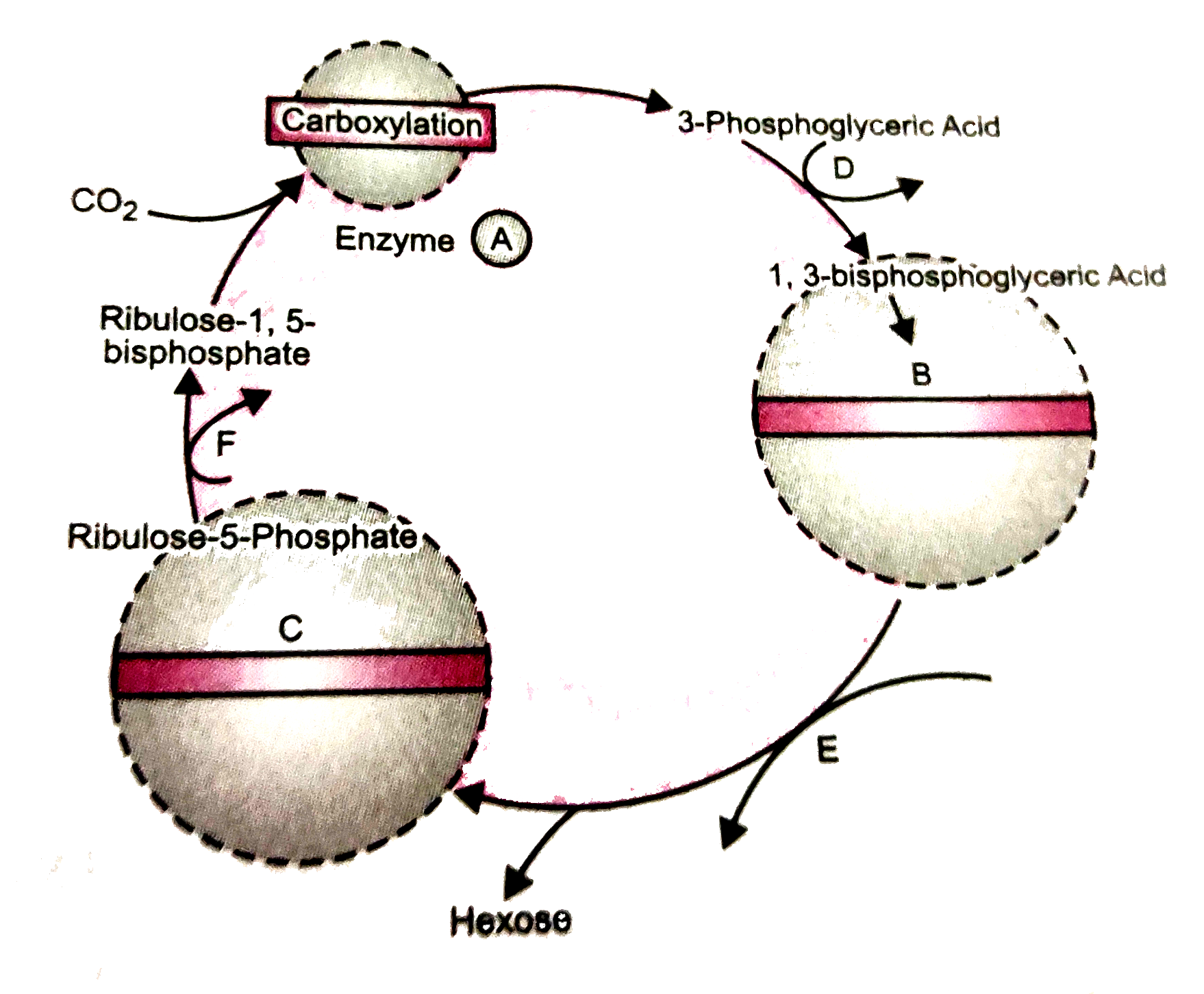NADP+ is converted into NADPH in
Cyclic ETS
Non-cyclic ETS
Calvin cycle
Photosystem-II
The correct Answer is:B
To answer the question, "NADP^(+) is converted into NADPH in," we can follow these steps:
1. Understanding the Context:
- NADP^(+) (Nicotinamide adenine dinucleotide phosphate) is a coenzyme that acts as an electron carrier in photosynthesis.
2. Identifying the Processes:
- There are two types of electron transport systems (ETS) in photosynthesis: cyclic and non-cyclic photophosphorylation.
- Cyclic photophosphorylation primarily produces ATP, while non-cyclic photophosphorylation produces both ATP and NADPH.
3. Focusing on Non-Cyclic Photophosphorylation:
- In non-cyclic photophosphorylation, light energy is absorbed by chlorophyll, which excites electrons.
- These excited electrons are transferred through a series of proteins in the thylakoid membrane.
4. Electron Flow:
- The process begins with the absorption of light by Photosystem II (P680), which excites electrons.
- The electrons are then passed to an electron transport chain, where they eventually reach Photosystem I (P700).
5. Formation of NADPH:
- The final electron acceptor in this chain is NADP^(+).
- The electrons, along with protons (H^+), reduce NADP^(+) to form NADPH.
6. Conclusion:
- Therefore, NADP^(+) is converted into NADPH during the non-cyclic photophosphorylation process in photosynthesis.
Final Answer:
NADP^(+) is converted into NADPH in the non-cyclic photophosphorylation process.
---
- NADP^(+) (Nicotinamide adenine dinucleotide phosphate) is a coenzyme that acts as an electron carrier in photosynthesis.
- There are two types of electron transport systems (ETS) in photosynthesis: cyclic and non-cyclic photophosphorylation.
- Cyclic photophosphorylation primarily produces ATP, while non-cyclic photophosphorylation produces both ATP and NADPH.
- In non-cyclic photophosphorylation, light energy is absorbed by chlorophyll, which excites electrons.
- These excited electrons are transferred through a series of proteins in the thylakoid membrane.
- The process begins with the absorption of light by Photosystem II (P680), which excites electrons.
- The electrons are then passed to an electron transport chain, where they eventually reach Photosystem I (P700).
- The final electron acceptor in this chain is NADP^(+).
- The electrons, along with protons (H^+), reduce NADP^(+) to form NADPH.
- Therefore, NADP^(+) is converted into NADPH during the non-cyclic photophosphorylation process in photosynthesis.
NADP^(+) is converted into NADPH in the non-cyclic photophosphorylation process.
Similar Questions
Knowledge Check
- Question 1 - Select One
NADP is converted into NADPH2 in
APhotosystem -IBNon- cyclic photophosphoryationCCalvin cycleDPhotosystem -II - Question 2 - Select One
NADP is converted into NADPH2 in
APhotosystem - IBNon - cyclic photophosphorylationCCalvin cycleDphotosystem - II - Question 3 - Select One
NADP+ is reduced to NADPH in
AHMPBCalvin cycleCglycoslysisDEMP


